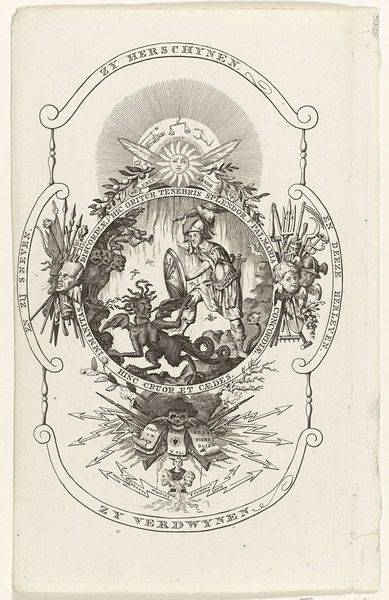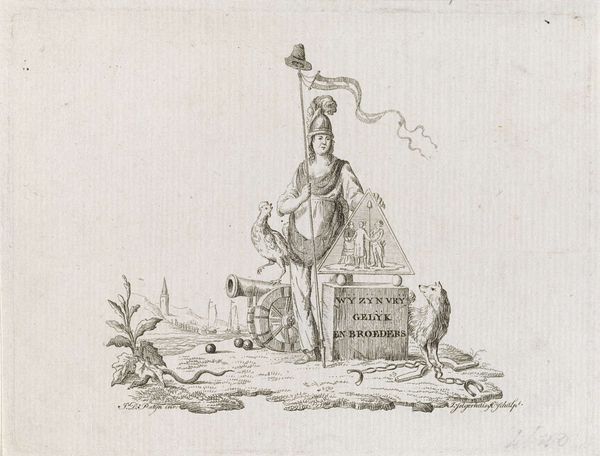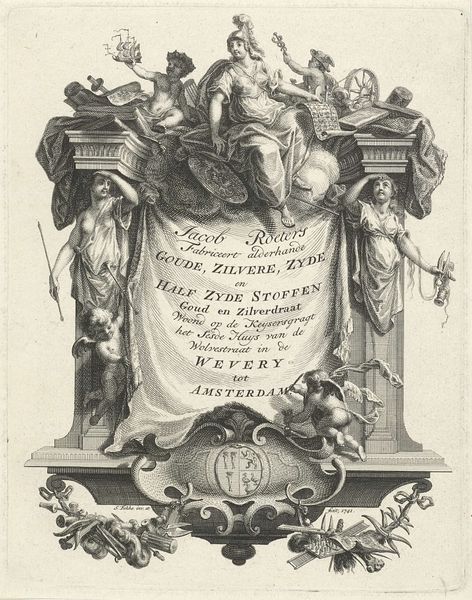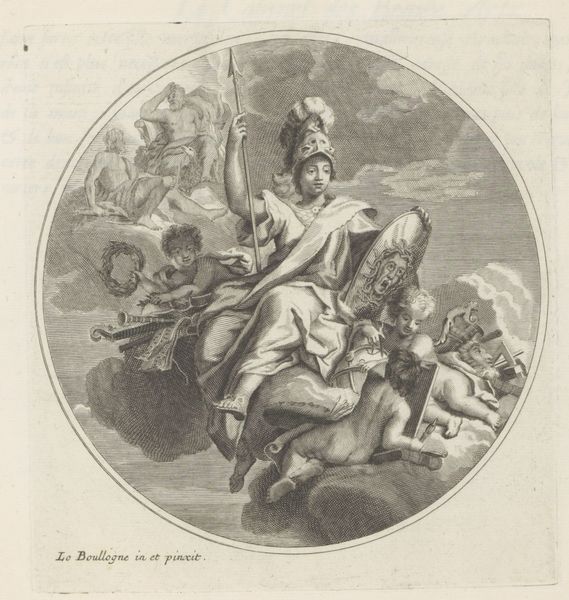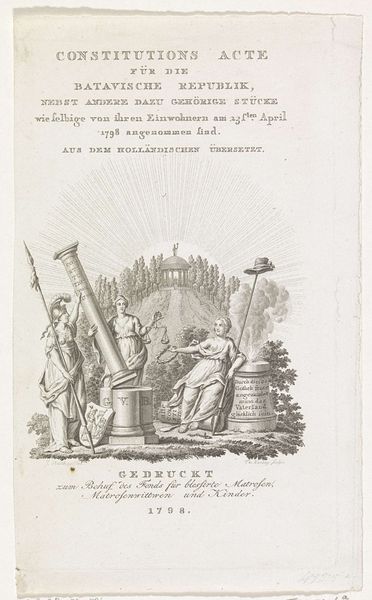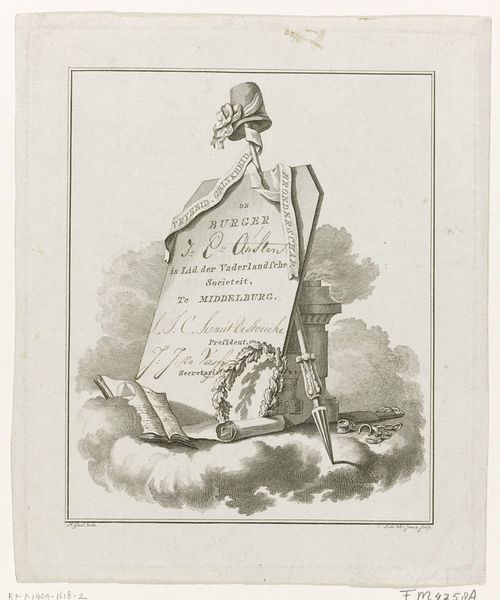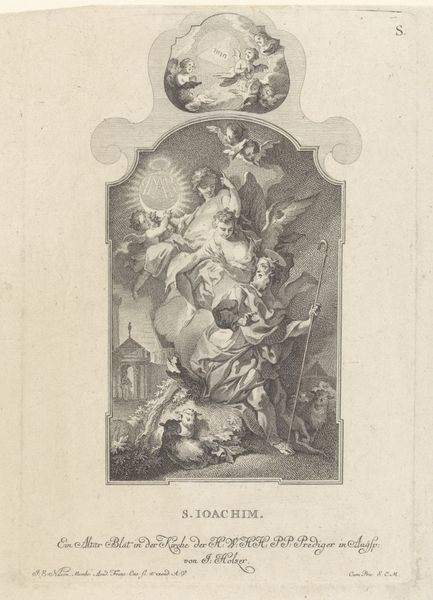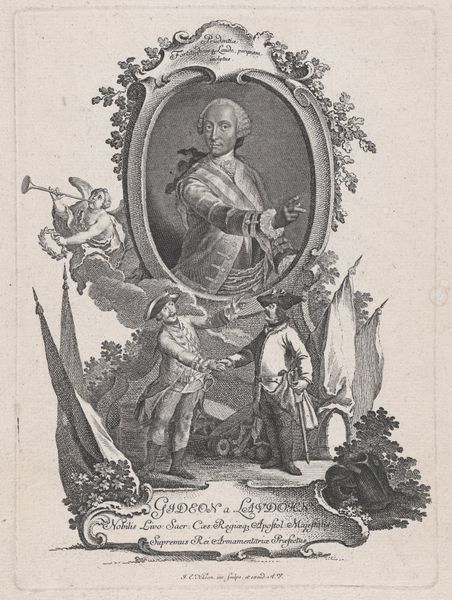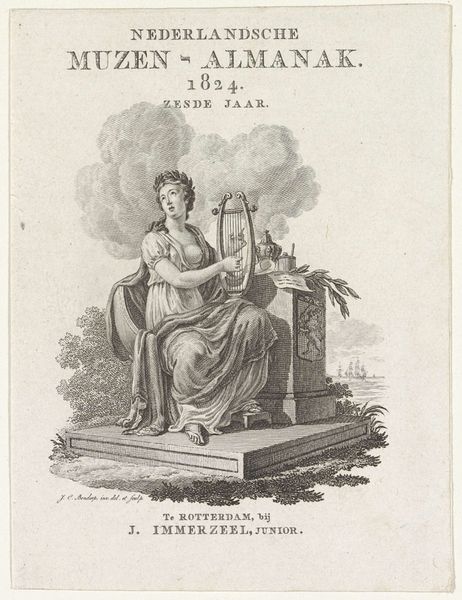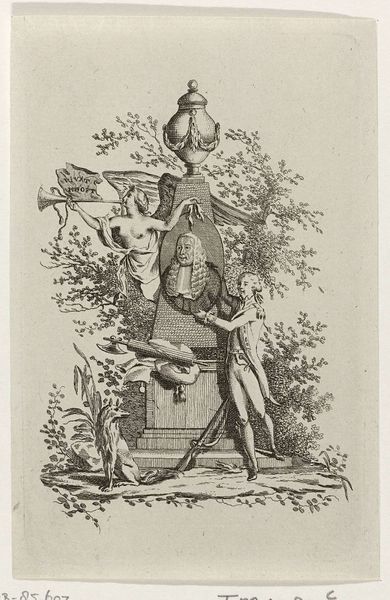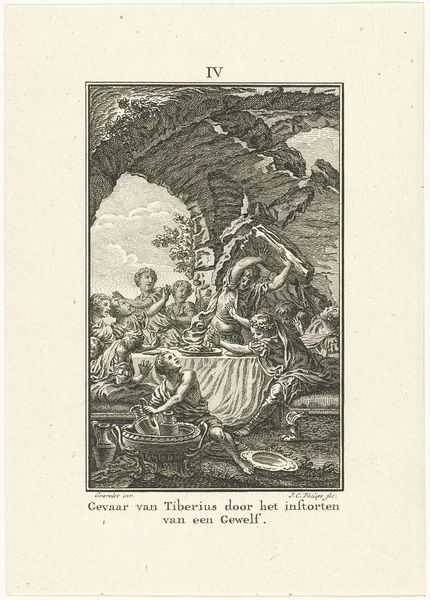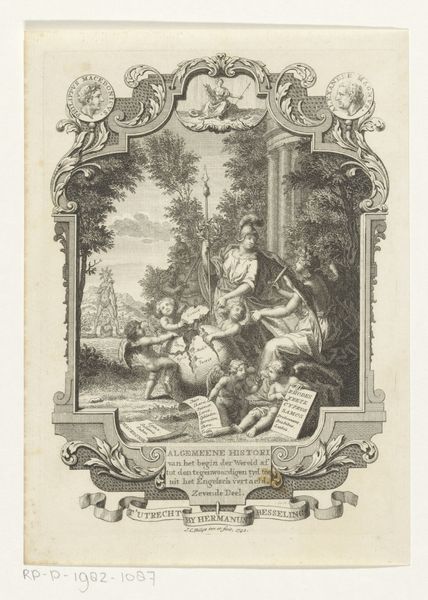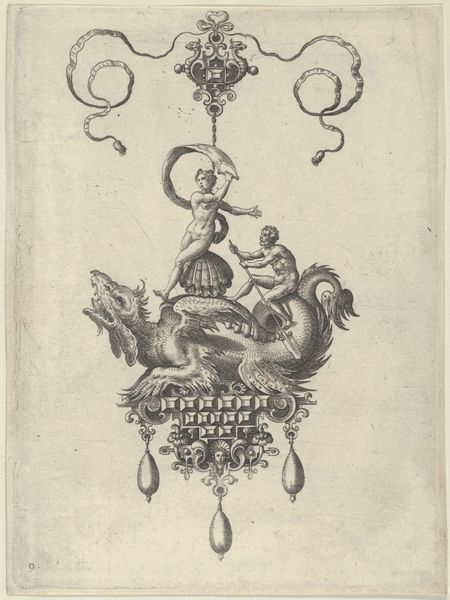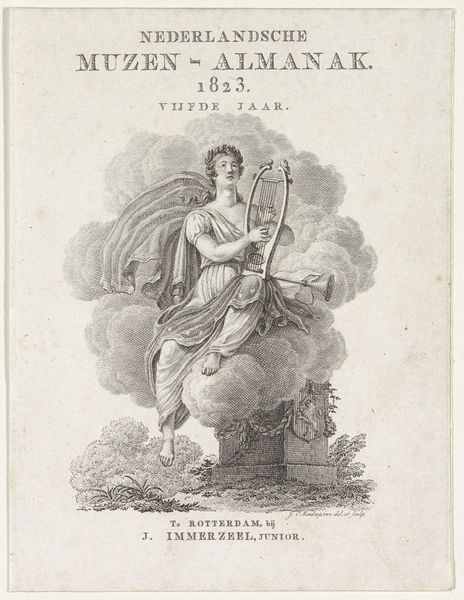
Dimensions: height 220 mm, width 141 mm
Copyright: Rijks Museum: Open Domain
Curator: Before us is a print from 1784, currently residing in the Rijksmuseum. Its full title is "Allegorische voorstelling met Vrijheid en een luipaard" by Izaak Jansz. de Wit, rendered using mixed media and engraving. Editor: My first impression is the balance. There's a striking stillness amid the implied movement of the central figure, and that snarling leopard provides an interesting focal point. Curator: Absolutely. The central figure is an allegorical representation of Freedom, identifiable through her attributes: the staff surmounted by a pileus, the classical drapery, the helmet. She dominates the foreground. It’s a statement of values during a time when ideas of liberty were taking root in Europe. The leopard may be a symbol of power. Editor: I'm immediately drawn to the line work. Look at the varied hatching and cross-hatching – especially noticeable on the figure of Freedom – that gives depth to this black and white work and communicates her power, wouldn't you say? Curator: The use of allegorical figures was a popular tool at the time. This wasn’t simply about artistry. This was about imbuing abstract ideas – in this case, freedom – with visual weight and societal impact. This print, along with countless others, would circulate through society, becoming a symbol. The publishing information included would give agency and legitimacy. Editor: Agreed, and I love how the cupids offer a playful counterpoint to that rather serious backdrop figure with the scythe—possibly Chronos or even Death. Visually, these figures direct my attention around the overall structure. Curator: De Wit captured the spirit of his time in this allegorical print. Editor: He certainly crafted a detailed visual language. It prompts us to examine how visual conventions work within the larger political discourse of the late 18th century. Curator: I agree that such pieces had influence in shaping contemporary opinion and documenting cultural history. Editor: Indeed, a fine reminder that visual art isn't just aesthetic—it also is social commentary.
Comments
No comments
Be the first to comment and join the conversation on the ultimate creative platform.
